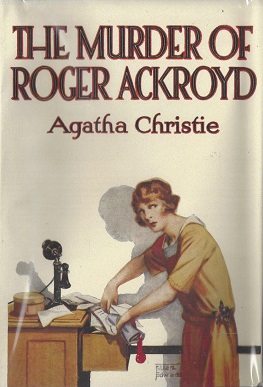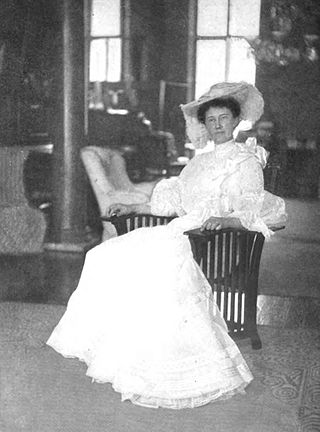Related Research Articles

Detective fiction is a subgenre of crime fiction and mystery fiction in which an investigator or a detective—whether professional, amateur or retired—investigates a crime, often murder. The detective genre began around the same time as speculative fiction and other genre fiction in the mid-nineteenth century and has remained extremely popular, particularly in novels. Some of the most famous heroes of detective fiction include C. Auguste Dupin, Sherlock Holmes, and Hercule Poirot. Juvenile stories featuring The Hardy Boys, Nancy Drew, and The Boxcar Children have also remained in print for several decades.

A whodunit is a complex plot-driven variety of detective fiction in which the puzzle regarding who committed the crime is the main focus. The reader or viewer is provided with the clues to the case, from which the identity of the perpetrator may be deduced before the story provides the revelation itself at its climax. The investigation is usually conducted by an eccentric, amateur, or semi-professional detective.

Crime fiction, detective story, murder mystery, mystery novel, and police novel are terms used to describe narratives that centre on criminal acts and especially on the investigation, either by an amateur or a professional detective, of a crime, often a murder. It is usually distinguished from mainstream fiction and other genres such as historical fiction or science fiction, but the boundaries are indistinct. Crime fiction has several subgenres, including detective fiction, courtroom drama, hard-boiled fiction, and legal thrillers. Most crime drama focuses on crime investigation and does not feature the courtroom. Suspense and mystery are key elements that are nearly ubiquitous to the genre.

The historical mystery or historical whodunit is a subgenre of two literary genres, historical fiction and mystery fiction. These works are set in a time period considered historical from the author's perspective, and the central plot involves the solving of a mystery or crime. Though works combining these genres have existed since at least the early 20th century, many credit Ellis Peters's Cadfael Chronicles (1977–1994) for popularizing what would become known as the historical mystery. The increasing popularity and prevalence of this type of fiction in subsequent decades has spawned a distinct subgenre recognized by the publishing industry and libraries. Publishers Weekly noted in 2010 of the genre, "The past decade has seen an explosion in both quantity and quality. Never before have so many historical mysteries been published, by so many gifted writers, and covering such a wide range of times and places." Editor Keith Kahla concurs, "From a small group of writers with a very specialized audience, the historical mystery has become a critically acclaimed, award-winning genre with a toehold on the New York Times bestseller list."

Anna Katharine Green was an American poet and novelist. She was one of the first writers of detective fiction in America and distinguished herself by writing well plotted, legally accurate stories. Green has been called "the mother of the detective novel".

The "locked-room" or "impossible crime" mystery is a type of crime seen in crime and detective fiction. The crime in question, typically murder, is committed in circumstances under which it appeared impossible for the perpetrator to enter the crime scene, commit the crime, and leave undetected. The crime in question typically involves a situation whereby an intruder could not have left; for example the original literal "locked room": a murder victim found in a windowless room locked from the inside at the time of discovery. Following other conventions of classic detective fiction, the reader is normally presented with the puzzle and all of the clues, and is encouraged to solve the mystery before the solution is revealed in a dramatic climax.

Mystery is a fiction genre where the nature of an event, usually a murder or other crime, remains mysterious until the end of the story. Often within a closed circle of suspects, each suspect is usually provided with a credible motive and a reasonable opportunity for committing the crime. The central character is often a detective, who eventually solves the mystery by logical deduction from facts presented to the reader. Some mystery books are non-fiction. Mystery fiction can be detective stories in which the emphasis is on the puzzle or suspense element and its logical solution such as a whodunit. Mystery fiction can be contrasted with hardboiled detective stories, which focus on action and gritty realism.

The Murder of Roger Ackroyd is a detective novel by the British writer Agatha Christie, her third to feature Hercule Poirot as the lead detective. The novel was published in the UK in June 1926 by William Collins, Sons, having previously been serialised as Who Killed Ackroyd? between July and September 1925 in the London Evening News. An American edition by Dodd, Mead and Company followed in 1926.

Marie Adelaide Elizabeth Rayner Lowndes, who wrote as Marie Belloc Lowndes, was a prolific English novelist, and sister of author Hilaire Belloc.

Freeman Wills Crofts FRSA was an Irish engineer and mystery author, remembered best for the character of Inspector Joseph French.

The Golden Age of Detective Fiction was an era of classic murder mystery novels of similar patterns and styles, predominantly in the 1920s and 1930s. The Golden Age proper is in practice usually taken to refer to a type of fiction which was predominant in the 1920s and 1930s but had been written since at least 1911 and is still being written today. In his history of the detective story, Bloody Murder: From the Detective Story to the Crime Novel, the author Julian Symons heads two chapters devoted to the Golden Age as "the Twenties" and "the Thirties". Symons notes that Philip Van Doren Stern's article, "The Case of the Corpse in the Blind Alley" (1941), "could serve ... as an obituary for the Golden Age." Authors Agatha Christie, Dorothy L. Sayers, Margery Allingham, and Ngaio Marsh have been collectively called the Queens of Crime.
This page details the other fictional characters created by Agatha Christie in her stories about the Belgian detective, Hercule Poirot.

Carolyn Wells was an American mystery author.
Mignon Good Eberhart was an American author of mystery novels. She had one of the longest careers among major American mystery writers.
Kenneth Martin Edwards is a British crime novelist, whose work has won multiple awards including lifetime achievement awards for his fiction, non-fiction, short fiction, and scholarship in the UK and the United States. In addition to translations into various European languages, his books have been translated into Japanese, Chinese, Korean, and Taiwanese. As a crime fiction critic and historian, and also in his career as a solicitor, he has written non-fiction books and many articles. He is the current President of the Detection Club and in 2020 was awarded the Crime Writers' Association's Diamond Dagger, the highest honour in British crime writing, in recognition of the "sustained excellence" of his work in the genre.
Cozy mysteries, also referred to as "cosy mysteries" or "cozies", are a sub-genre of crime fiction in which sex and violence occur offstage, the detective is an amateur sleuth, and the crime and detection take place in a small, socially intimate community. Cozies thus stand in contrast to hardboiled fiction, in which more violence and explicit sexuality are central to the plot. The term "cozy" was first coined in the late 20th century when various writers produced work in an attempt to re-create the Golden Age of Detective Fiction.
Girl detective is a genre of detective fiction featuring a young, often teen-aged, female protagonist who solves crimes as a hobby.
References
- ↑ (14 February 1924). "The Leavenworth Case" Read By Millions Here, Evening Independent
- ↑ Christie, Agatha (1977). An Autobiography . Dodd, Mead. p. 198. ISBN 9780396075165.
- 1 2 3 "Publishers Weekly Fiction Book Review The Leavenworth Case".
- ↑ "Complete Review The Leavenworth Case by Anna Katharine Green".
- 1 2 3 4 5 Maida, Patricia (1986). "Legacy Profile Anna Katharine Green". Legacy. 3: 53–9 – via Proquest.
- 1 2 3 4 5 Rooney, Paul (2016-04-02). ""By the Author of The Leavenworth Case " or Capitalizing on Reader Appetite for the Bestselling Novelist: Female Detection, Transatlantic Popular Fiction and Anna Katharine Green's The Mill Mystery (1886)". Women's Writing. 23 (2): 211–226. doi:10.1080/09699082.2015.1130283. ISSN 0969-9082. S2CID 163861411.
- 1 2 "Anna K. Green Dies; Noted Author, 88". The New York Times. April 12, 1935.
- 1 2 3 4 5 Dewan, Pauline (February 5, 2012). "Mystery Page Turners: Anna Katharine Green's The Leavenworth Case". Mystery Page Turners. Retrieved 2020-01-03.
- ↑ DuBose, Martha Hailey (2000). Women of Mystery: The Lives and Works of Notable Women Crime Novelists. New York: Thomas Dunne Books. p. 7.
- 1 2 MAIDA, PATRICIA D.; Green, Anna Katharine (1986). "Anna Katharine Green (1846-1935)". Legacy. 3 (2): 53–59. ISSN 0748-4321. JSTOR 25678971.
- ↑ Nickerson, Catherine Ross (2010). The Cambridge Companion to American Crime Fiction. Cambridge: Cambridge University Press. p. 33. ISBN 9780521199377.
- ↑ "The Leavenworth Case by Anna Katharine Green". Penguin Random House Canada. Retrieved 2020-01-03.
- ↑ (16 September 1891). "The Leavenworth Case", San Francisco Call
- ↑ (18 September 1891). Music and Drama, Boston Evening Transcript
- ↑ The National Cyclopaedia of American Biography, Vol. 9, p. 257 (1907)
- ↑ (22 January 1893). Written for Her Husband, Brooklyn Daily Eagle , p. 5